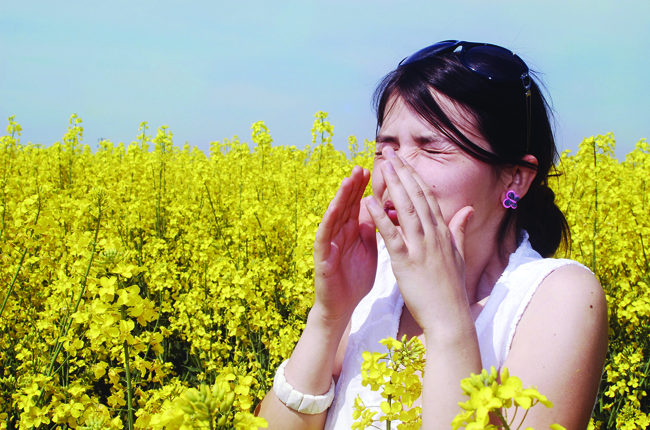I suffer from seasonal allergies and even had allergy testing to find out what I am allergic to. My daughter will soon have one done to see what she is allergic to. I saw this article and knew I had to share with you.

Allergy triggers are all around, and the rates of those people affected by various allergies seems to be growing. Worldwide, the rise in prevalence of allergic diseases has continued in the industrialized world for more than 50 years, according to the American Academy of Allergy, Asthma & Immunology. Sensitization to foreign proteins in one’s environment is present in up to 40 percent of the world’s population, continues AAAAI.
An allergy is defined as an overreaction of the human immune system to a foreign protein (allergen) that is eaten, inhaled, touched, or injected into the body. Allergies can cause such reactions as stuffy or runny noses, itchy eyes, coughing/sneezing, rashes, and hives. More severe reactions can include difficulty breathing, a lowering of blood pressure and asthma attacks.
Millions of visits to physician offices result in a primary diagnosis of allergic rhinitis, or hay fever – one of the most common allergy manifestations. The CDC says 17.6 million Americans were diagnosed with hay fever in the past 12 months. Allergic rhinitis is a common condition that creates symptoms similar to a cold. Unlike a cold, which is caused by a virus, allergic rhinitis is an allergic response to any number of triggers. Usually hay fever can be brought on by any number of allergens and sometimes it can be difficult to narrow down the exact cause. However, here are some of the more common allergens.
- Pollen: Of all things that can cause an allergy, those resulting from pollen tend to be the most prolific. Pollen can be released from trees, grasses, weeds, and flowers throughout much of the year. While the main goal of pollen is to fertilize other plants, pollen that is inhaled can cause allergic reactions. It’s one of the more difficult allergens to avoid since pollen is virtually everywhere.
- Dust: Dust is an accumulation of microscopic particles that become trapped in a home. A large portion of dust is comprised of dust mites. WebMD says about 20 million Americans are allergic to dust mites and their waste. Dust mites feed on skin from pets and humans. They tend to spike in numbers during warmer weather or if indoor temperatures are kept at 75 F or higher. Cleaning using a HEPA filter vacuum can keep dust at a minimum. Air purifiers also may be able to help.
- Animal dander: Millions of pet owners have an allergy to their animals, says AAAAI. It’s not the fur of the animal that causes the trouble, but usually proteins found in a pet’s shed skin, saliva and urine that can cause problems. Keep in mind that there are no truly hypoallergenic breeds, and length of hair or fur will not eliminate allergies. An allergist may be able to suggest a course of treatment.
- Mold: Tiny fungi with spores that float through the air, mold is yet another common allergen. The most common allergy-causing molds include Alternaria, Aspergillus, Cladosporium, and Penicillium. Preventing the environment needed for mold to grow can reduce allergic reactions. This primarily means airing out homes to keep them dry.
Allergies can occur all year long and be bothersome. Working with an allergist and avoiding the most common triggers can help people feel more comfortable.
Article compliments of MetroCreative. HM161820
About the Author
Discover more from Courageous Christian Father
Subscribe to get the latest posts sent to your email.






I didn’t know that dust had such a high concentration of dust mites. Knowing that makes me want to go dust my entire house right now! I also didn’t realize that they like warmer temperatures, but I think I’ll be more careful about keeping the house cool throughout the year from now on. Thanks for the info!